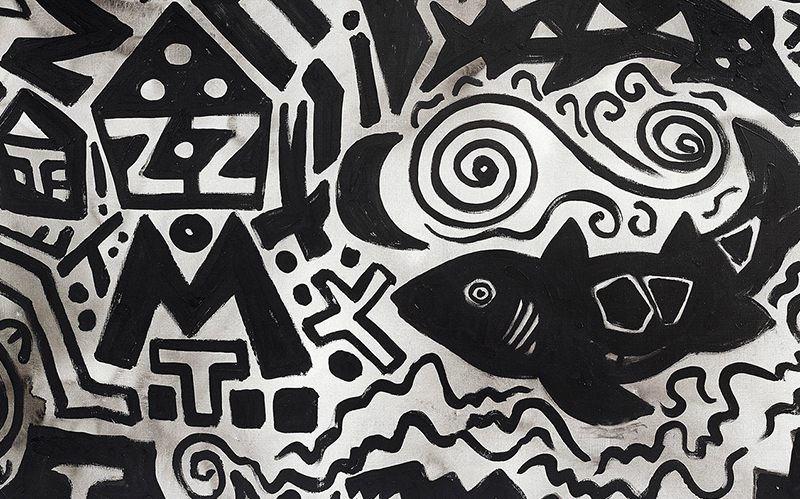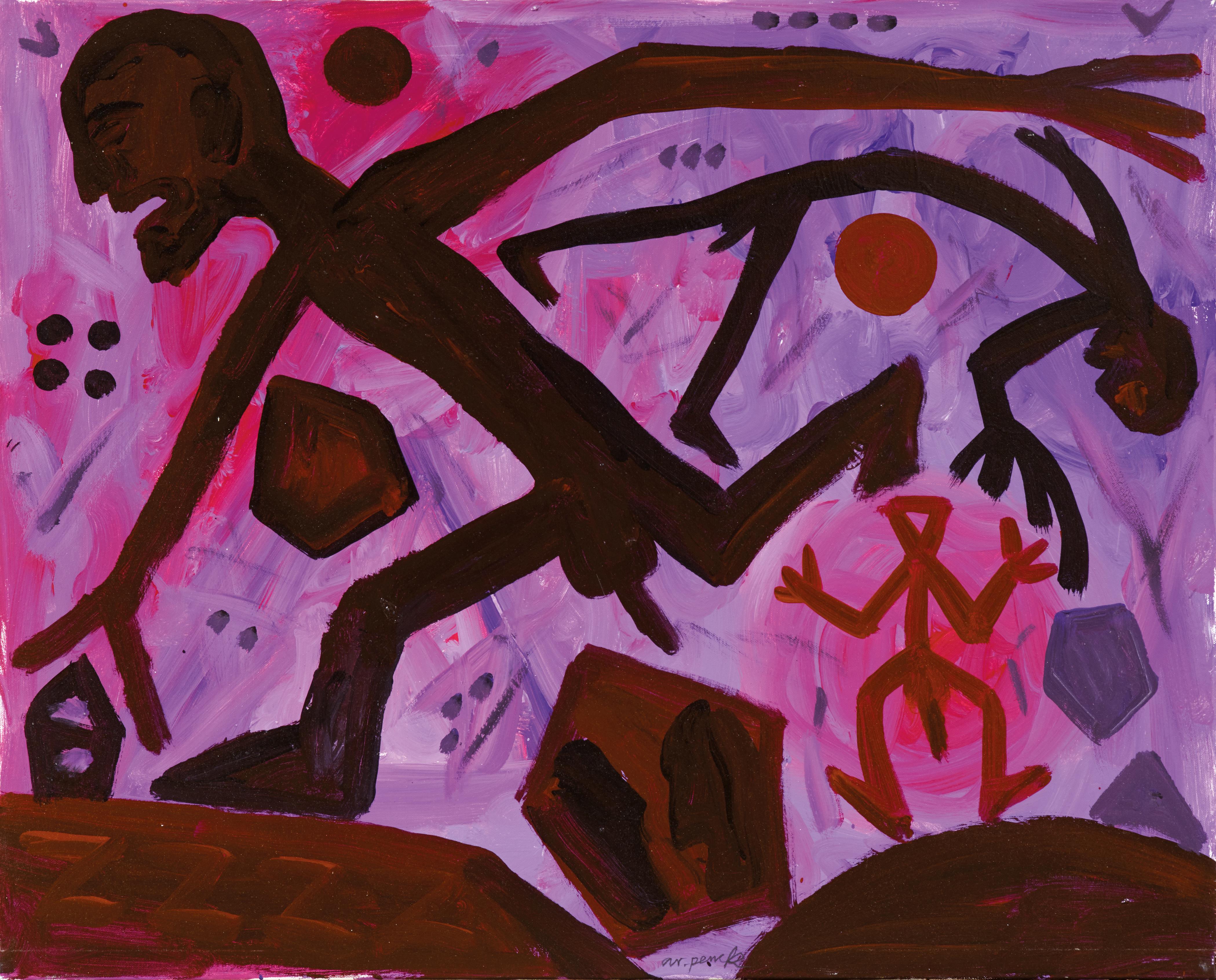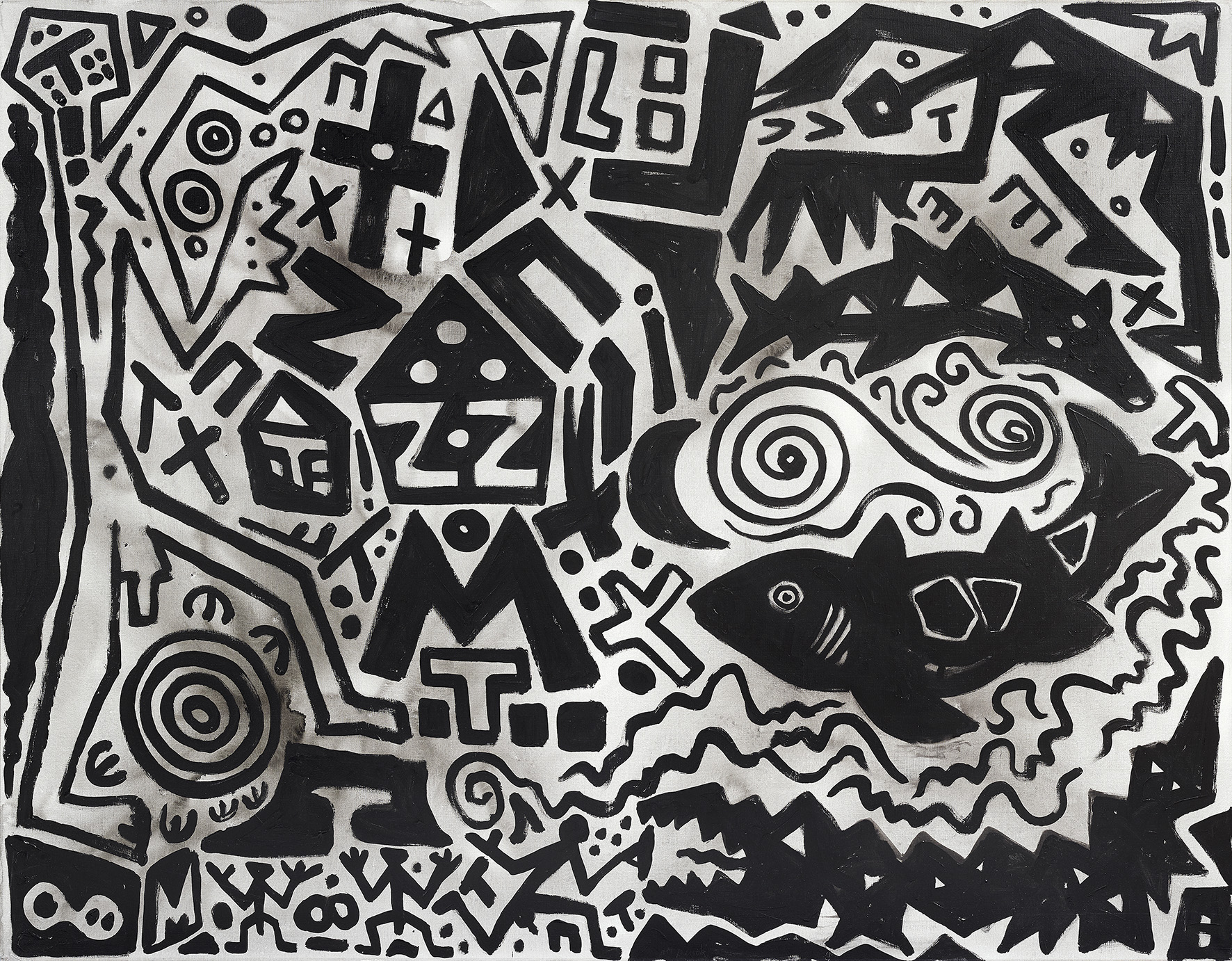
WILD WORLD
From the Dresden Underground into the big wide world: with his works
“Kreislauf der Spiele” and “Where I come from“, A.R. Penck is also present
in the upcoming sale of Post-War and Contemporary Art at Dorotheum.
Born in Dresden on 5 October 1939, A. R. Penck, a pseudonym for Ralf Winkler, was a self-taught nonconformist artist. He became famous for his stickman figures and his language of symbolic pictorial forms, reminiscent of cave painting and the art of graffiti. The artist’s pseudonym refers to a well-known geologist named Albrecht Penck. The adoption of his name emphasises the significance of prehistoric painting and calligraphy for the artist, especially for the “Weltbilder” (World Pictures) he produced in the 1960s. The debate surrounding mathematics, cybernetics and theoretical physics of the 1970s inspired Penck to create a series of works using simple everyday symbols he called “Standarts”, a combination of the words “standard” and “art” with which he intended to
create an universal artistic language.
A. R. Penck’s uncompromising relationship with the art of painting excluded him, and his co-artists of the ‘Lücke’ group, from studying at the Academy of Visual Art in the GDR, as well as from membership of East Germany’s Association of Visual Artists, the ‘Verband Bildener Künstler der DDR’. Fortuitously however, A. R. Penck’s work was disovered by a West German gallerist, Michael Werner, in the 1960s. Here he was to find acclaim and his work was included in the documenta art fair, despite his not being able to attend the event himself. After years of surveillance by the state security service of the GDR, Penck was forced to leave East Germany in 1980 and lived from then on in France and Ireland.

A. R. Penck is regarded as the father of the so called ‘Jungen Wilden’ group of artists who departed from the minimalist and concept art styles and began to return to a figurative art form. Unlike other neo-expressionist artists however, Penck found his key reference in Paul Klee’s animistic drawing. In his book “A. R. Penck, L’uomo e il suo labirinto esis-tenziale” (Man and his existential labyrinth, 2006), Luciano Caprile describes Penck’s figures as manifestations of the subconscious, rooted in a primordial artistic expression from the very beginning of time. He goes on to say that “this repeated artistic symbol, brought to life by Penck takes on the meaning of a decisive, indelible chromosomal mark that not only concerns the artist’s experience, but that of the whole of humanity.”
The palette Penck uses for his symbols, oscillates between an uncompromising, absolute use of two-tone black and white and a vigorous use of bright colour as illustrated in his work entitled “Where I come from”, 1999, which is to be offered at auction at Dorotheum. The symbols explore the sensitivity of both the spectator and the artist, who draws the path of his characters without defining their boundaries in space and time as he leads them from one encounter to the next. As Caprile says, the human figure in Penck’s work “seems to move relentlessly within itself in search of an outlet that is not so much physical, as psychological”.

In his work of the early 2000s, Penck increasingly incorporated this human presence into the universe of signs he deployed. This can be observed, for instance, in “Kreislauf der Spiele”, a work from 2005, which is also to be included in Dorotheum’s upcoming Post-War and Contemporary Art sale. In this piece, the foreground depicts the circular movement of two large fish, while the figures with human features are utilised to populate to the edges.
More than ever before, the works of this period probe questions of uncertainty and insecurity through a pictorial system, which addresses the viewer with easy directness, only later to enter into their rational mind: “Penck’s aesthetic presents itself as an account, a diary, authentic writing in ideograms, conjugating forms and transforming them into words, sounds, obsessions, to be deposited in intimate human depths, in the memory”. (Caprile, 2006)
INFORMATION
Contemporary Art auction, 24 June 2020
Palais Dorotheum, Dorotheergasse 17, 1010 Wien
20c.paintings@dorotheum.at
Tel. +43-1-515 60-358, 386











